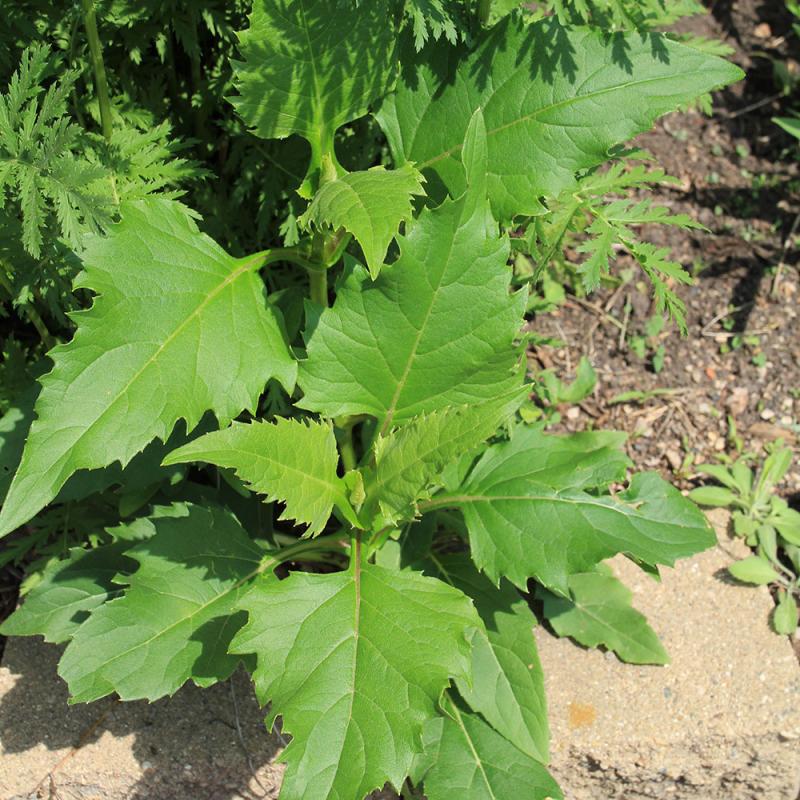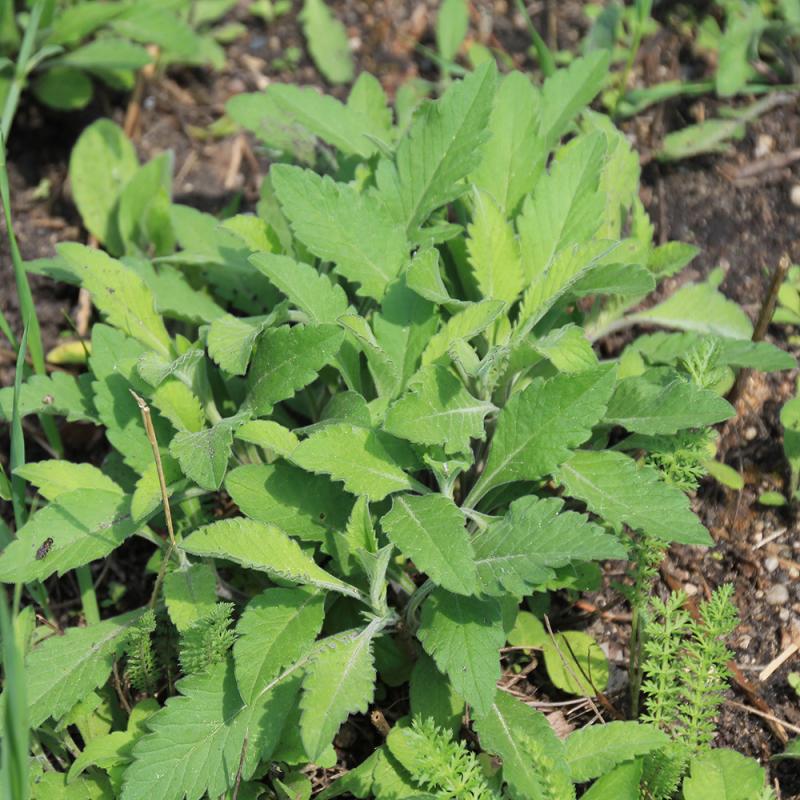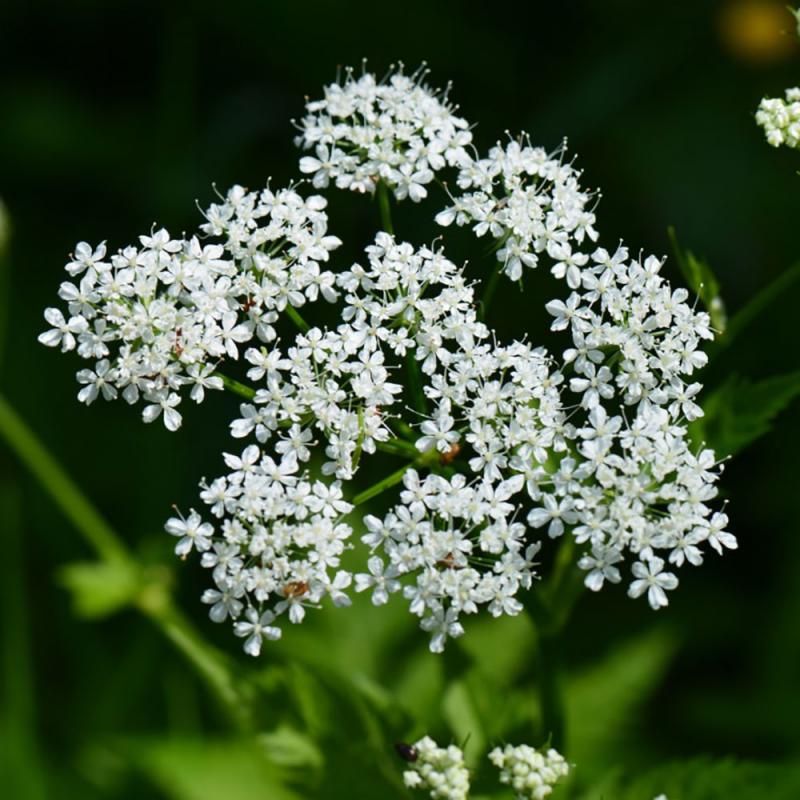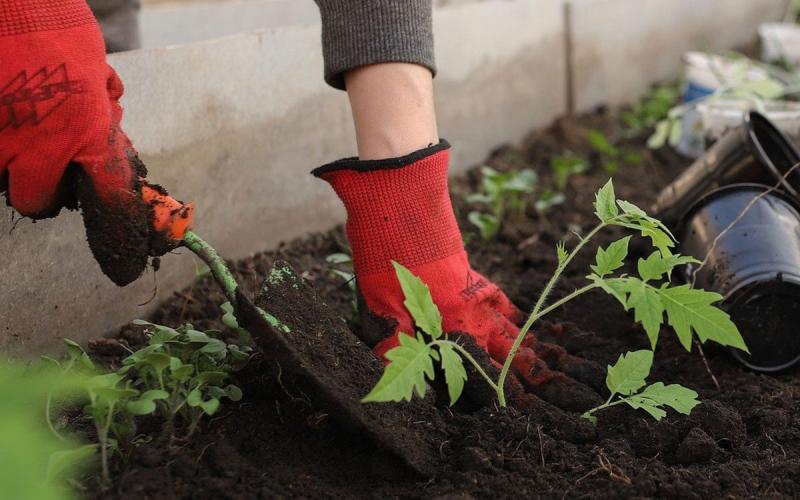Original article by David Graper, former SDSU Extension Horticulture Specialist and Master Gardener Program Coordinator. Updated by Kristine Lang, Assistant Professor and SDSU Extension Consumer Horticulture Specialist.
If there is one thing that can be said about a garden, it is that there are almost always weeds to pull. One of the classic definitions of a weed is “a plant that is growing out of place.” While we most generally consider common plants, such as crabgrass, dandelions, purslane and many others, as weeds, just about any plant in the wrong location can be considered a weed at times. Whether or not you personally would consider a particular plant a weed could also depend on how much of that plant you have already and how much of the garden that plant has already taken over.
Gardeners and garden writers have various names for some of these more “aggressive” plants, such as “spreading,” “invasive” or “thug,” plus a few more-colorful terms, which some gardeners might use under more private circumstances. Then, just about the time you are about to eradicate a particular plant from your garden forever, a friend stops by, and that is just the plant they are looking to plant in a particularly difficult site. It is as if the old saying “one man’s trash is another man’s treasure” becomes “one gardener’s weed is another gardener’s pleasure.” So, here are descriptions of some of the most-common garden perennial plants that you may want to consider carefully before planting based on your garden size and on your tolerance for spreading plants.
Shasta Daisies

Shasta daisies (Leucanthemum x superbum) are generally a welcome sight in the spring garden, with blooms showing up in June and extending through September with proper deadheading (Figure 1).
Their showy, white flowers with the yellow centers are pretty and make great cut flowers. However, unless you have some of the more well-behaved cultivars, the typical species, Leucanthemum x supurbum, is an aggressive spreading plant. What starts as a nice clump of a few plants can soon be a mass of hundreds taking over a large section of your garden.
Shasta daisies spread mainly by seed, so if you cut off the flower stalks when the flowers fade, you will reduce the chances of it spreading. But if you want to grow Shasta daisies without fear of a garden takeover, look for some of the named varieties, which tend to either produce little viable seed or do not spread from the base like the species might.
Yellow Archangel

Yellow Archangel (Lamium galeobdolon) is a rapid-growing groundcover vine for shady places, including under trees (Figure 2).
It has attractive, silvery foliage all summer long, but particularly in the spring. In early summer, small, yellow flowers develop at the base of each leaf, giving a nice display of color. While this plant can fill in heavily shaded sites where little else will grow, the aggressive qualities have their downside. Like the Aegopodium that is described below, this plant can take over if you are not careful. In somewhat warmer climates, it has pushed out native species and covered large areas of the forest floor, where it can be difficult to control.
Like the Leucanthemum, there is at least one cultivar called ‘Herman’s Pride’ that is not aggressive at all. Instead, it forms nice clumps of upright stems with the same yellow flowers. Its leaves are about one-quarter the size of the species form, but it is much better behaved.
Pale Indian Plantain

Pale Indian Plantain (Cacalia atriplicifolia) is a native, tall-grass prairie plant that is sometimes planted in our area (Figure 3).
It grows to form a basal rosette of leaves that may spread to a foot wide. In late-spring, a flower stalk grows up that can reach five feet or more, producing a branched panicle of pale, greenish white flowers.
After the flowers mature, they produce little seeds with a white tuft attached that makes them easy to be carried by the wind. New plants are easily produced around the garden. While this is an interesting plant, it may not be interesting enough to warrant the need for deadheading and then digging out the unwanted baby plants.
Garden Valerian

Garden Valerian (Valeriana officinalis) flowers in the late-spring to early-summer months and is most commonly known for the potential medical properties of the root (Figure 4).
Garden Valerian grows about two-to-three feet tall and has a white flower head. Some people think the flowers have a pretty, vanilla fragrance, but in large quantities, some say the flowers smell like feet – and not in a good way.
They spread readily by seed and by rhizomes (horizontal underground stems) – soon you can have them popping up in fairly large areas, particularly in moist areas of your garden, as they prefer occasionally wet soil. Pulling out rogue Garden Valerian by the base of the plant and deadheading are both options to keep this plant in check.
Cup Plant

Cup Plant (Silphium perfoliatum) is native to South Dakota and a good floral resource for pollinators (Figure 5).
Silphium is a member of the Aster family, so it has daisy-like flowers that develop seed that can be wind-blown from the original plant. This is no small plant. A mature plant can reach six-to-eight feet in height with a three-foot spread, so when it decides to settle down amongst much smaller plants, it is very noticeable. Mature plants have fairly large, one-half-inch wide stems that are square. The cup plant name comes from the way the bases of the leaves clasp the stem and can hold water after a rain.
The seedling plants can be a little difficult to identify. Look for the roughly-textured, opposite leaves on a fairly large plant for a seedling. You may not notice the square stem or cupped leaves until they get a little larger. You may need a shovel to dig these guys out, because they develop a pretty good root system at an early age.
Pale Pincushion Flower

Cream Scabious, or Cream Pincusion, (Scabiosa ochroleuca) is a biennial plant that can catch you by surprise a few years after being planted in the garden (Figure 6).
It spends its first year as a small, unassuming clump of somewhat fuzzy leaves growing close to the ground. It does not flower the first year, but rather stores up carbohydrates for the winter and next year’s floral display. By mid-summer of the next year, the plant has grown up to three feet in height and may reach three feet in width by the end of the summer.
It produces dozens of one-inch-wide creamy yellow flowers that are produced on fine, wiry stems. The anthers stick up on tiny, little pin-like stalks, giving the plant its common name. All of those cute little flowers produce lots of seeds, which, when ripe, also look like more pins stuck in a pin cushion. It soon falls free to spread around and plant next year’s crop of seedlings. The first-year plants are easy to pull out, but are often missed, because they are not that showy in the garden.
Snow-on-the-Mountain

Snow-on-the-mountain (Aegopodium podograria) is a favorite plant of both authors, but only for the right kind of locations where the plant can spread without creating headaches for all involved. This plant spreads mostly by underground stems called rhizomes, soon making a dense groundcover that outcompetes weeds as well as other garden plants (Figure 7).
It grows well in shade; although, when grown in full shade, it may not flower. Snow-on-the-mountain may get scorched leaves during the heat of the summer or when grown in full-sun conditions. The variegated form is the one that is most-often planted. It has a three-part dissected leaf with white margins along the edges. In early summer, it produces a white umbel flower, like that of dill, but smaller. The plant only grows about eight to 10 inches-tall, except when it is blooming.
This is a great plant to use under shade trees, where it can just grow as far as it wants. If you want to keep this plant in check, you may need to use landscape edging, pavers and occasional hand removal of plants that step out of line.
References and Resources
- Armitage, A. 2020. Herbaceous Perennial Plants: A Treatise on their Identification, Culture, and Garden Attributes. (4th Ed.) Stipes Publishing. Champaign, IL, USA.
- North Carolina State Extension. North Carolina Extension Gardener Plant Toolbox.
Special thanks to SDSU Extension Master Gardeners Tim Schreiner and Stacy Dreis for serving as volunteer copy editors of this article.


